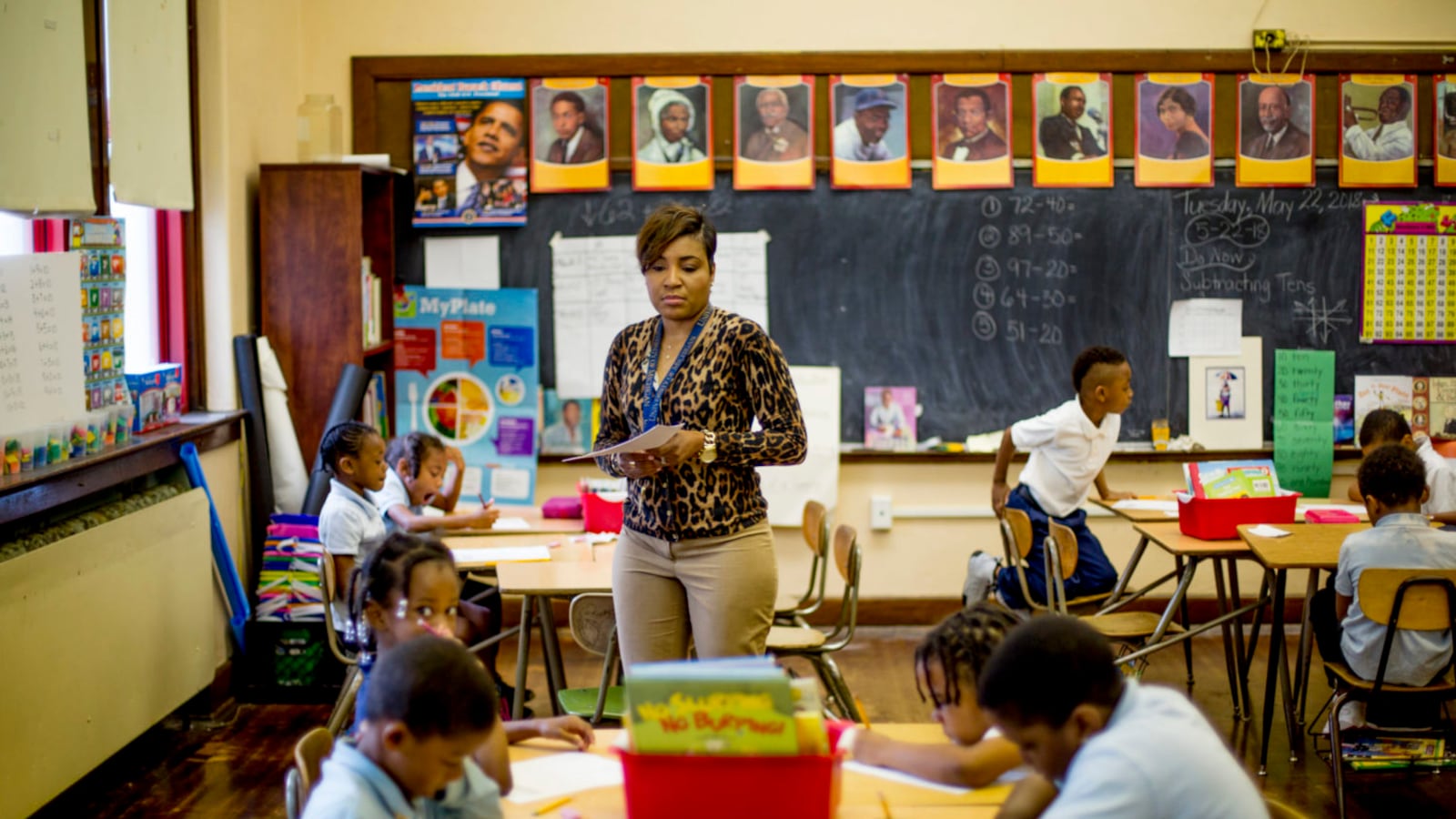By eighth grade, Shawntia Reeves had attended at least four different schools. It took a toll on the Detroit student, who told Chalkbeat about the struggle of making and then losing new friends after switching schools.
“It makes you feel like you ain’t got no one to talk to,” she said.
New research shows that the sort of social disruption Reeves experienced can affect how often students show up to school. When students have more “familiar faces” around them in class, they’re less likely to be chronically absent, the paper finds — a connection that could prove useful to schools now being held accountable for reducing absences for the first time.
When kids know their peers, “Students don’t have to adjust as much to making new friends or relationships and figuring out, I don’t want to hang around this kid,” said Jacob Kirksey of the University of California Santa Barbara, one of the paper’s authors. “That sort of cognitive overload may cause kids some unintended consequences.”
The study, published last month in the peer-reviewed Elementary School Journal, focuses on thousands of elementary-school students across 13 schools in a small urban California district. Researchers Kirksey and Michael Gottfried measured what share of a given student’s classmates were in their class the previous year. The average was 29 percent.
Then they looked at whether having more of the same peers — who they call “familiar faces” — was related to a student’s rate of absences, controlling for other factors that might affect attendance like student poverty, class size, and school performance.
No matter how they cut the data, being surrounded by more familiar faces was linked to higher attendance.
Specifically, a student who knew every classmate had one fewer unexcused absence than a similar student with zero familiar faces. One fewer absence might not seem like a lot, but the average student had fewer than two unexcused absences (meaning ones not accounted for by parent’s note for illness or family emergency).
Similarly, students with more of the same peers were less likely to be chronically absent, which is defined as missing more than 10 percent of the school year for any reasons, excused or unexcused. The benefits seemed greatest for kids who were absent more to begin with.
“It’s a moderate effect size,” said Kirksey, adding that most initiatives only move the needle slightly on absenteeism.
The paper can’t definitively show that having familiar faces around causes fewer absences. It also focuses on just a single unnamed district, so it’s unclear how broadly the results apply.
As for what explains the results, “Children’s mere exposure to peers in previous years may make children more comfortable in the schooling environment, given this baseline of familiarity,” write Kirksey and Gottfried. “If classrooms maintain some degree of stability for students in their day-to-day learning context by having a percentage of familiar faces, then students may be less likely to be absent from school as a result of anxiety or disengagement.”
The study appears to be the first to look at this phenomenon specifically. But prior research has found that assigning teachers to the same students in back-to-back grades, or “looping,” led to better academic results. (It’s possible that some of those gains are actually due to familiar peers, not just having the same teacher twice.)
Chalkbeat has documented extremely high rates of student turnover at schools in Detroit, and how attending more schools is correlated with lower academic performance. That, too, could be in part because a new school means few familiar faces for students.
That doesn’t mean that new situations are always bad for students, and studies have shown switching schools can be helpful in certain instances. But one of Kirksey’s takeaways is that students moving from class to class or school to school need extra support.
“What my research would say is that, obviously, if you’re removing a kid [from class] or you’re transitioning them, you need to know that there may likely be an effect from not having that consistency,” he said. “It is to say, we need to keep a particular eye on this kid.”


